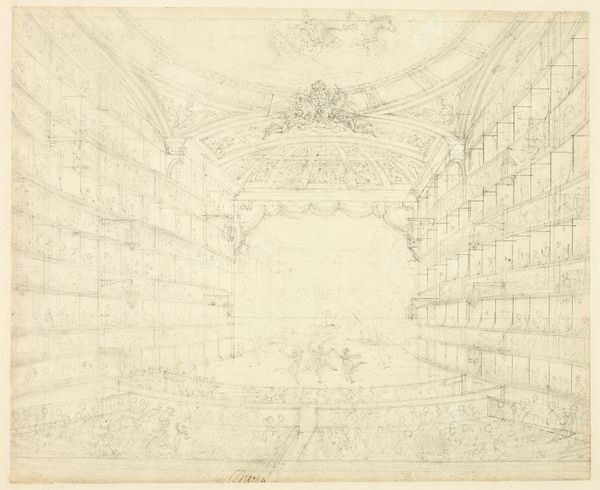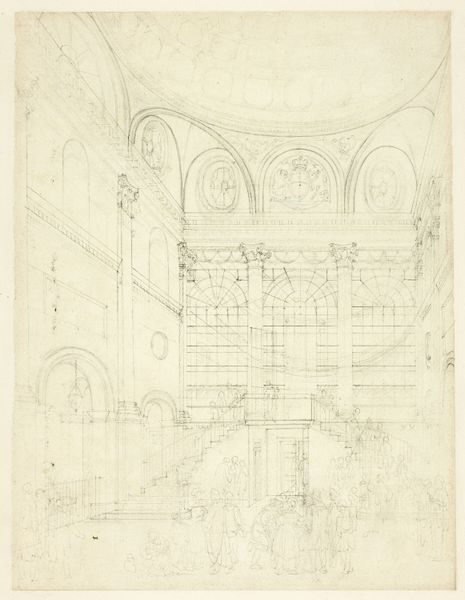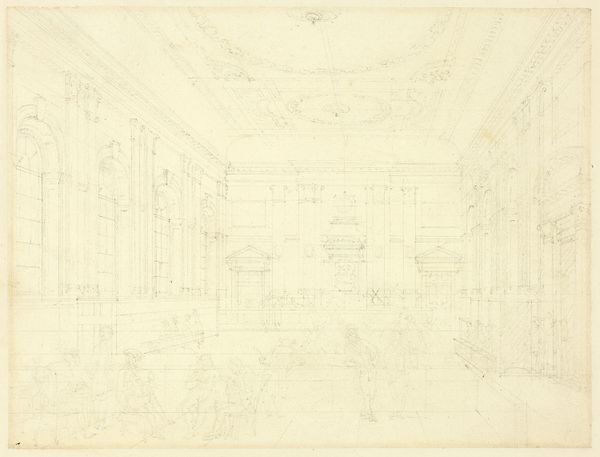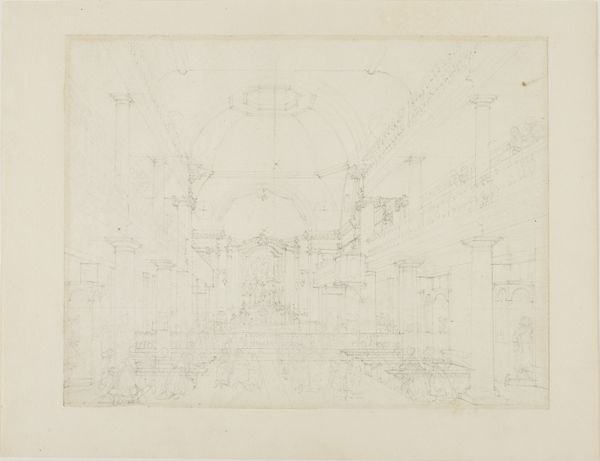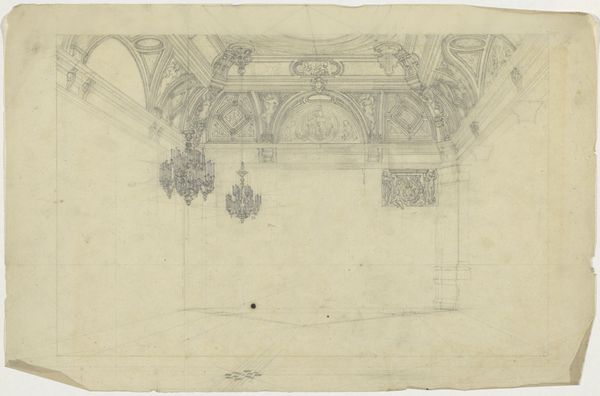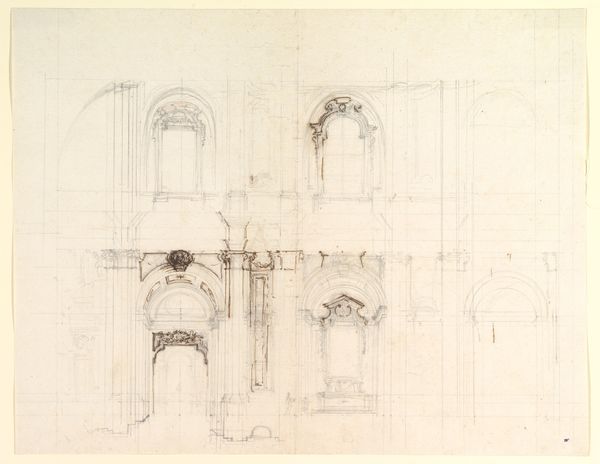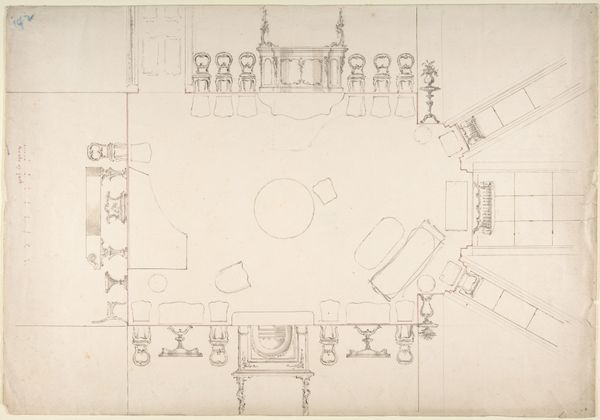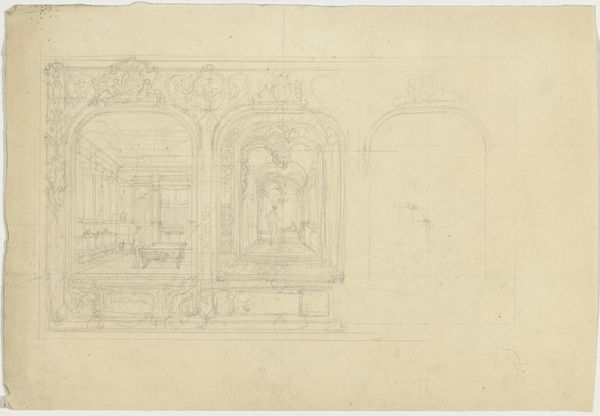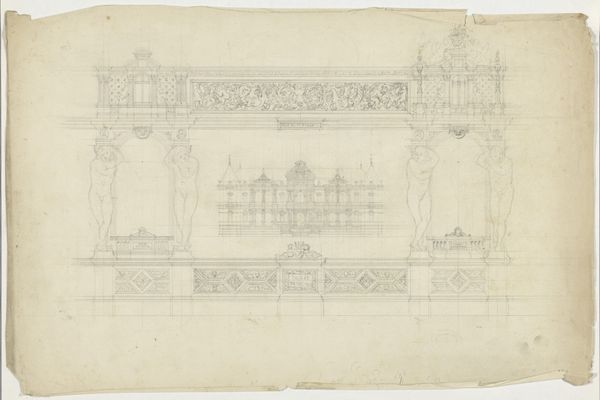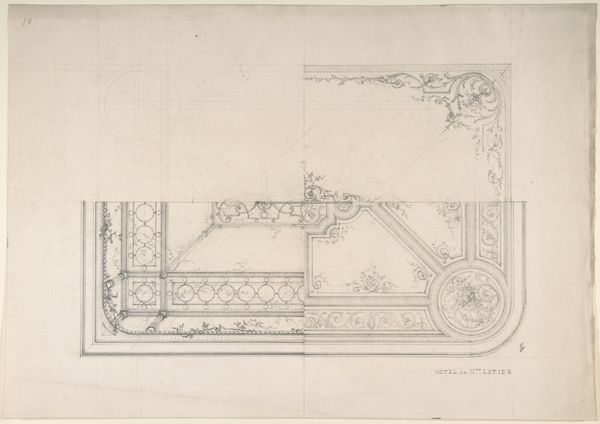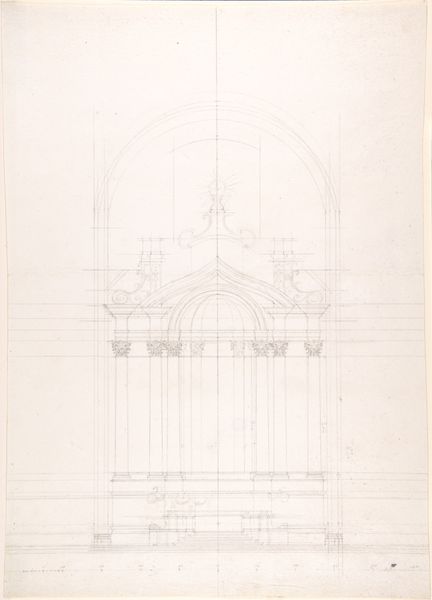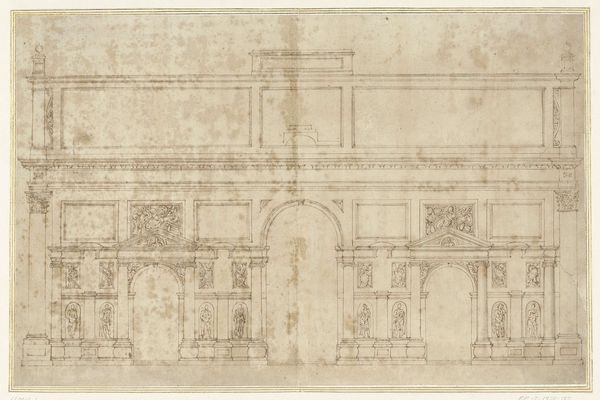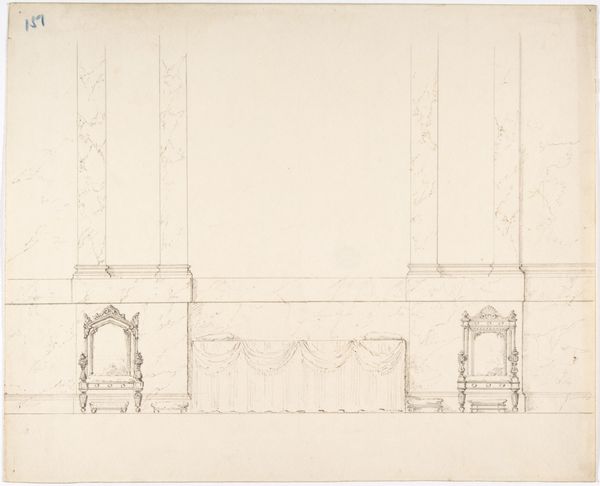
Study for An Oratorio-Covent Garden Theater, from Microcosm of London c. 1808
0:00
0:00
drawing, print, paper, graphite, architecture
#
architectural sketch
#
drawing
#
neoclacissism
#
aged paper
#
toned paper
# print
#
sketch book
#
etching
#
paper
#
personal sketchbook
#
england
#
pen-ink sketch
#
water
#
pen work
#
graphite
#
sketchbook drawing
#
cityscape
#
sketchbook art
#
architecture
Dimensions: 206 × 259 mm
Copyright: Public Domain
Curator: This architectural drawing, likely graphite and ink on paper, presents an interior study by Augustus Charles Pugin, dating around 1808. It’s titled "Study for An Oratorio-Covent Garden Theater, from Microcosm of London" and belongs to the collection of The Art Institute of Chicago. What strikes you initially about this depiction? Editor: The ethereal lightness of it! It's almost as if the theater is materializing from smoke. Those hanging lamps, repeated with meticulous detail, remind me of constellations. There's a ghostliness about it, a past grandeur just barely hanging on. Curator: That ghostliness, as you call it, reflects a moment in London's history, deeply impacted by social change. The Covent Garden Theater, then and now, stood as a cultural nexus, embodying the tastes and aspirations of the burgeoning middle classes alongside the established elite. The study reveals the theatrical stage, but the rendering of the audience gives a sense of mass and inclusion; suggesting that theatrical performances brought various people from different social statuses under the same roof. Editor: It is so interesting how these seemingly fragile, light sketches contain coded cultural information. All those tiers – visually dominated by rows upon rows of identical lighting fixtures -- echo social stratifications within that era. Light as illumination but also light as in the elites... Curator: Precisely! And remember that theater then wasn't merely entertainment. It served as a key platform for disseminating ideas. Political, philosophical, social... the stage was a battleground, a testing ground for new ways of seeing the world. Editor: Looking at the proscenium arch, draped with what looks like opulent fabric swags, it seems like Pugin is reminding us that theater as a symbol extends into an awareness about society itself, both its physical structures but also the ideological framing we're subtly absorbing all the time. Even from the dark. Curator: I see your point; the arch operates symbolically like a stage for cultural representation. Pugin doesn't just capture a place, he invites us to contemplate the dynamic interchange between spectacle and social identity. In that era the city itself was on display, always changing and expanding and theatrical art of stage performance merely held a mirror up to London life, both critiquing and amplifying. Editor: This pushes me to look past what may seem as merely draftsmanship skill to the idea of architecture as cultural script. Pugin shows that spaces have so much social potency, where meaning isn’t stable or inert but emergent through use and reinterpretation. Curator: This brief exploration definitely deepens the potential contained within Pugin's original study. Editor: Indeed! Another good reminder that there’s always more to observe in visual artworks, however minor they may at first appear!
Comments
No comments
Be the first to comment and join the conversation on the ultimate creative platform.
